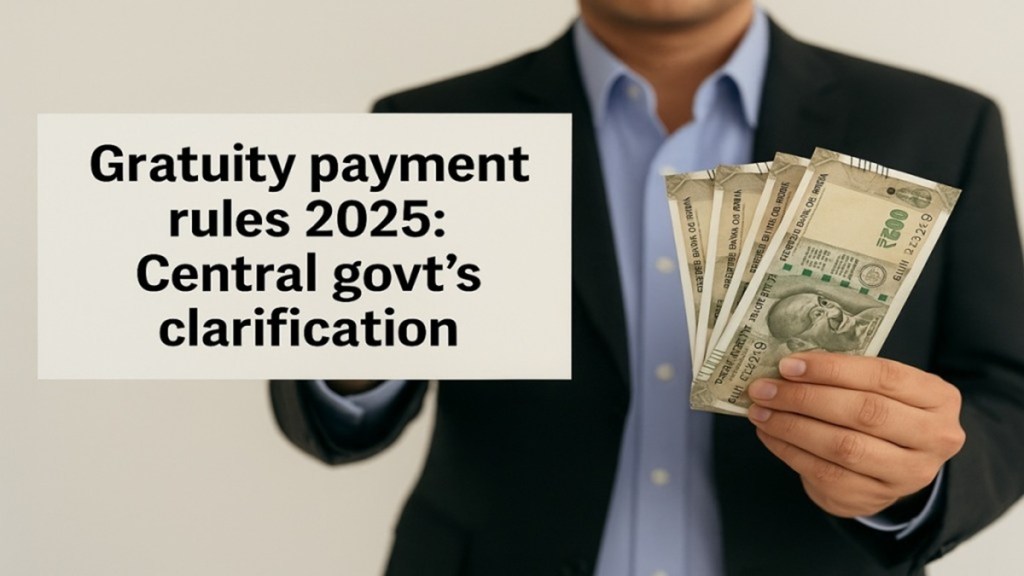Major gratuity rule changes 2025: The government keeps reforming labour laws at regular intervals to ensure ease of living for crores of workers in the organised sector. One component that was probably less attended was gratuity when it comes to pension and wage reforms over the last five years. The last time the government introduced a major change in the gratuity rule was in 2018, when the tax-free gratuity ceiling was hiked to Rs 20 lakh from Rs 10 lakh.
For the last 6 years, the gratuity rules in India had remained almost the same for private sector workers. But 2025 marked the biggest shake-up in gratuity laws in many decades, thanks to the implementation of the new Labour Codes from 21 November 2025.
These reforms have not only widened who qualifies for gratuity but have also redefined how it is calculated, taxed, and accounted for. From fixed-term employees becoming eligible in just one year to the expansion of “wages” for calculation, the landscape has changed significantly for both employees and employers.
Here are five biggest gratuity rule changes every salaried employee must know in 2025.
1. Fixed-term and contract employees will now get gratuity after just 1 year
Earlier, gratuity required five years of continuous service under the Payment of Gratuity Act, 1972. This meant project-based workers, contract staff, and fixed-term employees rarely got paid gratuity — even if they worked for more than 4 years.
This has now changed. Under the new Labour Codes, fixed-term employees (FTEs) will also be eligible like permanent staff for gratuity after only one year of service.
This is one of the most employee-friendly reforms, especially for sectors like IT services, media, manufacturing, and construction where contract employment is common. The change ensures millions of workers will not lose out simply because their contract ends before the five-year mark.
2. Expanded definition of “wages” likely pushes gratuity payouts higher
One of the most impactful reforms is the new, widened definition of “wages”. Under the old system, gratuity was calculated largely on basic salary, which kept the final payout comparatively smaller. The Labour Codes introduce a uniform wage structure where multiple pay components fall under “wages” and allowances cannot exceed 50% of total compensation. It means the pension and other retirement benefits, including gratuity, will be calculated on 50% of total remuneration. The calculation formula will, however, remain the same.
This means: Gratuity calculation will be based on a broader salary base, and final gratuity payouts could rise by 25–50% for many employees. For long-term employees, this could significantly increase the retirement corpus.
3. Clarified or enhanced tax-free gratuity limits
While the tax-free gratuity ceiling for private-sector employees stays at Rs 20 lakh, the government has clarified that certain categories — especially central government employees — now enjoy a higher limit of Rs 25 lakh.
This revision, introduced earlier and now reaffirmed under the new framework, private sector employees will continue to get a tax-free limit of Rs 20 lakh for gratuity. In the case of central government staff, this tax-free gratuity limit will remain Rs 25 lakh.
4. Gratuity cover extended to more types of workers, not just permanent staff
The 2025 labour reforms have expanded gratuity rights across multiple categories: Fixed-term workers, contract employees, seasonal staff (proportionate gratuity), and employees working on project or assignment-based roles.
This expansion gives near-universal gratuity coverage across organised employment, bringing India closer to global labour standards.
For industries with high attrition or project cycles, this reform significantly improves employee retention and worker morale.
5. Companies must recognise gratuity liability more transparently in financial statements
The new rules require employers to account for gratuity obligations in line with Ind AS 19 / AS 15.
This means:
-Companies must disclose gratuity liabilities more clearly
-Higher gratuity payouts (due to wage-definition changes) will impact company balance sheets
-HR teams may restructure compensation to manage future liabilities
While this adds compliance pressure on employers, it indirectly benefits employees — transparency means companies are more accountable for timely gratuity payments.
What hasn’t changed
Despite major structural changes, some fundamentals remain the same:
The gratuity formula continues as: 15/26 × last drawn wages × years of service
Gratuity remains payable at retirement, resignation, termination (in many cases), death or disablement (no minimum service required).
For permanent staff, the 5-year minimum service rule still applies, unless the employee is on a fixed-term contract category covered under the new code.
Why 2025 is a landmark year for salaried employees
The 2025 reforms mark a structural shift in how India treats worker benefits:
-More workers covered
-Higher payouts expected
-Better tax clarity
-Faster eligibility for many employees
In a country where job switching, contract roles, and short tenure positions are increasingly common, these changes bring greater fairness and financial security to the modern workforce.
At the same time, employees should closely examine their CTC breakup, employment category, and HR policy updates — as these changes may directly impact their gratuity entitlement.

